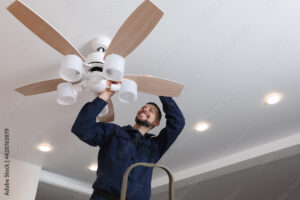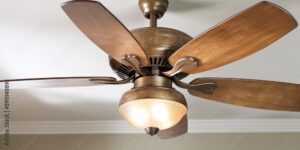Pros and Cons of Using Ceiling Fans to Help with Your Energy Costs
Ceiling fans are a popular fixture in many homes, valued for their ability to keep rooms cool and comfortable. However, beyond comfort, ceiling fans can also impact your energy costs. For homeowners and energy savers, understanding the benefits and drawbacks of using ceiling fans can help in making informed decisions. This post dives deep into the pros and cons of ceiling fans, providing you with valuable insights to optimize your home’s energy efficiency.
For Tons of Great Free Information please hit “Like & Subscribe”
Websiteconstructionconsumeradvocacyinstitute.com
Podcastanchor.fm/galloway
www.youtube.com/@ConstructionConsumerAdvocacy
The Pros of Using Ceiling Fans
1. Energy Efficiency
Ceiling fans are known for their energy efficiency. Unlike air conditioners, which can consume a significant amount of electricity, ceiling fans use a fraction of the power. This results in lower energy bills, especially during warmer months when keeping cool is a priority.
2. Cost-Effective Supplement
Ceiling fans can be a cost-effective supplement to your air conditioning system. By circulating the air in a room, ceiling fans can help distribute the cool air more evenly, allowing you to set your thermostat a few degrees higher without sacrificing comfort. This can lead to substantial savings on your energy bill.
3. Versatility in Design
Available in various designs, ceiling fans can complement any home décor. Whether you prefer a modern, sleek look or a more traditional style, there’s a ceiling fan to match. Additionally, some ceiling fans come with lighting fixtures, providing both illumination and air circulation.
4. Environmentally Friendly
For eco-conscious homeowners, ceiling fans are a greener alternative to air conditioning units. They produce fewer greenhouse gases and contribute to a smaller carbon footprint. When used in conjunction with other energy-saving practices, ceiling fans can help make your home more sustainable.
5. Year-Round Use
Ceiling fans are not just for summer. Many models come with a reverse mode, which allows the blades to spin in the opposite direction. This feature can be used in winter to circulate warm air that rises to the ceiling, helping to keep your home warmer and reduce heating costs.
The Cons of Using Ceiling Fans

1. Limited Cooling Capability
While ceiling fans can make a room feel cooler, they do not actually lower the temperature. They work by creating a wind-chill effect, which can be insufficient during extremely hot weather. In such cases, an air conditioning unit may still be necessary.
2. Installation and Maintenance

Installing a ceiling fan can be a bit of a challenge, especially for those who are not DIY enthusiasts. It often requires a strong ceiling support and proper wiring, which may necessitate professional installation. Additionally, ceiling fans need regular maintenance, such as dusting the blades and ensuring the motor runs smoothly.
3. Noise
Although many modern ceiling fans are designed to operate quietly, some models can be noisy, particularly at higher speeds. This can be a distraction in quiet environments, such as bedrooms or home offices.
4. Aesthetic Concerns
While ceiling fans come in various designs, they might not suit everyone’s taste. Some people may find them bulky or out of place in certain rooms. Ensuring that the fan matches the room’s design can sometimes be a daunting task.
5. Air Distribution Limitations
Ceiling fans are most effective in rooms with standard ceiling heights. In rooms with very high or very low ceilings, the air distribution may not be as effective. Additionally, the placement of furniture can also impact the fan’s ability to circulate air evenly throughout the room.
Conclusion
Ceiling fans offer a range of benefits, from energy efficiency and cost savings to design versatility and environmental friendliness. However, they also come with limitations, including their cooling capability, installation needs, and potential noise.
For homeowners looking to save on energy costs, ceiling fans can be a valuable addition to their cooling strategy. By understanding the pros and cons, you can make an informed decision on whether ceiling fans are right for your home.
If you’re interested in more energy-saving tips or need help with installation, reach out to our community of DIY enthusiasts and experts. Together, we can make your home more comfortable and energy-efficient.
—
By following these guidelines and weighing the pros and cons, you’ll be well on your way to optimizing your home’s energy efficiency with ceiling fans. Happy savings!
For Tons of Great Free Information please hit “Like & Subscribe”
Websiteconstructionconsumeradvocacyinstitute.com
Podcastanchor.fm/galloway

